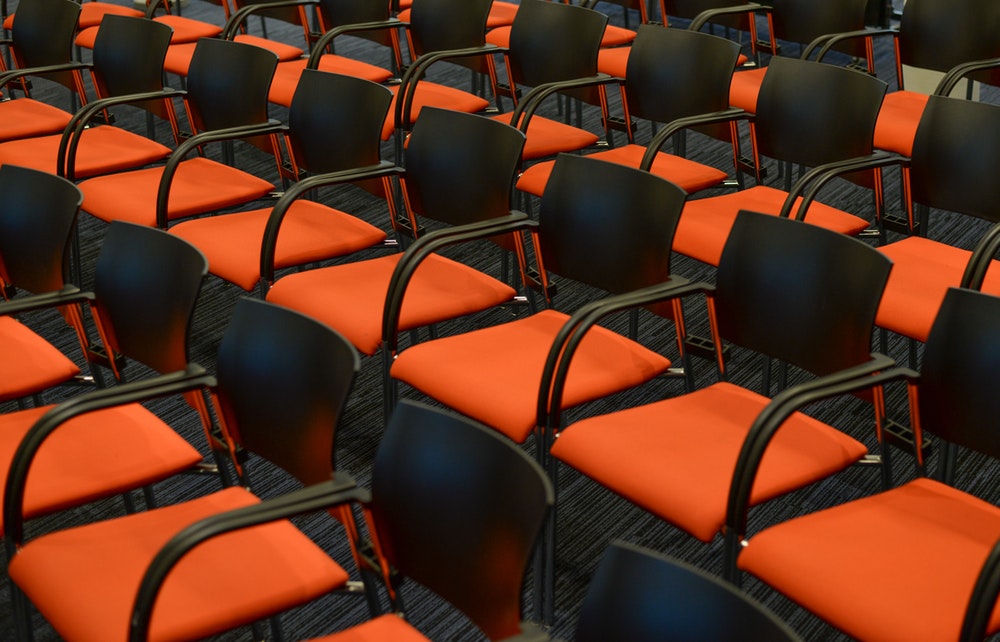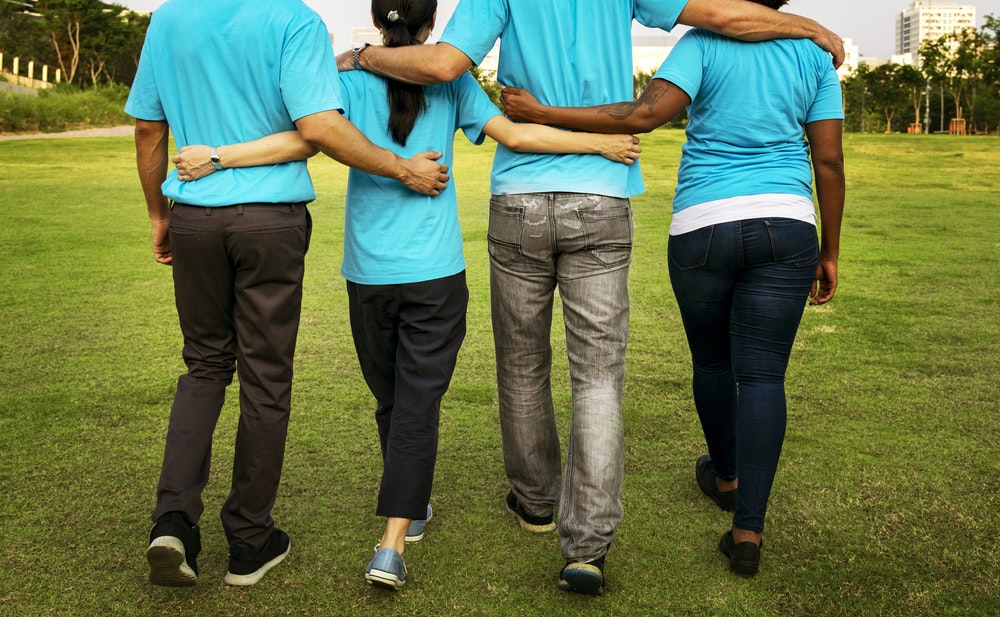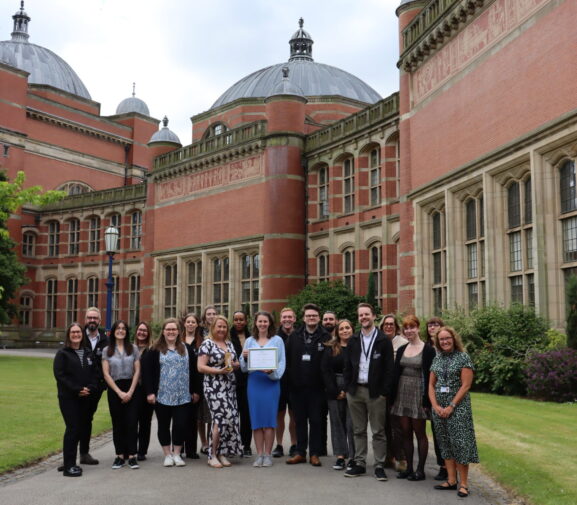Wellbeing activities for conferences aren’t just a nice-to-have.
Not when workplace wellbeing is a concern for every industry. Over 15.4 million working days are lost in the UK every year due to stress, depression and anxiety – 57% of all working days lost to ill health. Meanwhile, FTSE 100 companies that have made employee wellness and engagement a priority outperform their competitors by 10%.
If it matters in the everyday workplace, it matters at your conference.
What is wellbeing for conferences?
While a conference offers great opportunities to network, share expertise and gain more from leaders in the field, it can also be a pressurized environment. Conditions like depression and social anxiety can make a busy setting, filled with new faces and noise, a real challenge. Now throw in performance anxiety, or stress over getting the most value and benefit from a compressed and frenetic experience.
Even if you’ve never had issues with your mental health, a long-awaited event can be overwhelming. But a universal commitment to wellbeing helps every attendee to boost their focus and engagement, whatever their background.

As a conference organiser, you can support delegates’ wellbeing in many ways.
The IACC Trends in Delegate and Nutrition Wellbeing survey suggests adding ‘brain foods’ to your catering plans, such as walnuts, avocados, quinoa, blueberries and spinach.
Architects and interior designers are constantly developing and adapting their plans for learning environments, to make educational spaces and other venues more flexible, welcoming and inspiring.
But wellbeing for conferences should also be threaded through the activities of the day, within sessions and via breakouts and workshops.
Find out how with these ten simple activities, from mindfulness exercises to movement and play.
Countdown to 5
Who: small or large groups
When: at the beginning of a session
This simple sensory countdown activity is a great way to regain focus, and put your mind in an aware and receptive state. Delegates can write down answers if they choose, or simply relax and count through the following:
- 5 things you can see
- 4 things you can touch
- 3 things you can hear
- 2 things you can smell
- 1 thing you can touch
Feel the Fruit
Who: small groups
When: at the beginning of a session
This wellbeing activity for conferences is based on Fleming and Kocovski’s ‘raisin exercise’. It’s specifically designed to treat social anxiety, making it a great choice to bring a sense of calm connection to a new environment at the start of a meeting or conference session.
Each delegate is given a piece of fruit – a kiwi, lemon, orange, bunch of grapes or handful of raisins – and prompted to imagine this fruit is entirely new to them. They’re then prompted to consider the fruit: how it looks, feels, how it makes their skin feel; how it smells; how it tastes. Doing so allow the mind to clear of distractions and worries, and give all attention to the moment.

Gratitude Wall
Who: whole conference
When: before the first morning session, or at the end of a session
Practising gratitude means taking note of something you’re grateful for at any given moment. It means those moments don’t pass unacknowledged, and stimulates mindfulness. This note could relate to a person; an activity you’re glad you’re able to do; something you’re grateful to have learned. In a conference setting these might relate to the event – but it’s important to make clear that small, everyday things count too: something that made you laugh today, or a good meal.
Get delegates to write their ‘gratitudes’ on paper to be dropped into a jar or tucked behind their name badge. Depending on context and group size, you might also suggest they’re written on post-its, or directly onto a wall display.
Breathing boxes
Who: small or large groups
When: opening a breakout session, or as guided downtime, in a room with plenty of space and a carpet
This activity combines creative expression with a breathing exercise. It can be broken into two parts, or performed as a continuous activity.
First is a simple arts and crafts exercise. Attendees should be provided with a ‘net’ to allow them to create a small cardboard box – plus art supplies. The act of colouring can be an effective mindfulness tool, allowing direct concentration on a single task, with no pressure related to the outcome. Ideally this should take place in a silent space, to avoid distractions and allow calm focus.
Once the box is constructed, participants lie on the floor and place their box on their waist. They focus on breathing in and out, counting the seconds of each inhalation and exhalation, and watching the box slowly move up and down with their breathing. This encourages diaphragmatic breathing, where the belly lifts as much as or instead of the ribcage – a calming practice used in yoga.
Cardboard Creations
Who: multiple small teams
When: between sessions, as a scheduled wellbeing break
This wellbeing activity requires nothing more than scissors, tape and a big stack of cardboard boxes and packing materials – most venues will have plenty to spare, and if not ask your catering supplier!
Wellbeing isn’t all about mental calm. It can also derive from playful activity, in a setting where there are no right answers. This task gives you a set period of time to construct a cardboard creation: animals, robots, spaceships, furniture, vehicles, mountains… A facilitator can support attendees with ideas if they’re lost for inspiration.
At the end of the conference, be sure to remove the tape before recycling the folded cardboard, or reusing it at another event.

DIY skincare
Who: small groups
When: as a scheduled wellbeing workshop, or an evening activity
Hands-on activities can support delegates who find networking and other unfocused social events a challenge. This DIY sugar scrub also provides the participant with something personal and practical to take away and use for self-care – offering a sensory experience both while making it, and using it later. You’ll need a space which allows handwashing, and where you can comfortably make a little mess.
Using an easy recipe like this, participants can measure and combine just three ingredients to create a scented skin scrub that exfoliates skin and leaves you feeling clean, fresh and moisturised. Although skincare might seem gendered to some participants, we all have skin. And by providing a range of different essential oils, it’s possible to personalise the scent to your own tastes.
Walk and Talk
Who: small or large groups
When: during a session
Conferences can involve a lot of sitting. That’s not good for the spine, and it increases your risk of cardiovascular disease, diabetes, and more. It’s not good for the mind, either: a recent study suggests that sedentary behaviour thins the medial temporal lobe in the brain, which is involved in memory processing. We’re sitting down to learn, when doing so limits our capacity to do so.
Walking meetings are a powerful way to change the context from a traditional, overfamiliar learning setting. They’re also an opportunity to stay on task while keeping moving. A walking meeting works best with the right facilitation: for example, with a clear task and set time-frame. Try replacing the group breakout discussions you’d normally have around a table with a walking conversation with the same participants. Alternatively, begin the plenary with an opportunity to walk and talk over the achievements of the day.

Mindful Walking
Who: small or large groups
When: between sessions, in scheduled breaktimes
Walking also offers an opportunity to step out of the learning environment, and ‘reset’ the mind after periods of work.
In this activity, the facilitator offers prompts to make the walk a mindful experience as well as an opportunity to move those muscles. This is an observational exercise that’s directed at seeing what we do not usually notice. Instead of looking around and seeing a tree, a sign, a person, participants are encouraged to recognise the individual qualities of their environment: colours and shapes, light and darkness, sounds and smells, textures and the sensations on their skin as they move. This helps to reconnects them with their own body, as well as becoming more attuned to their unique environment.
Disco in the Dark
Who: whole conference or large groups
When: at the plenary or opening session
Walking isn’t the only way to incorporate physical movement. This wellbeing activity for conferences provides a quick, lighthearted way for a large group to take a valuable break from hard work.
Use your venue’s AV facilities to cue up an upbeat song (‘Happy’ by Pharrell Williams, or ‘Good Times’ by Chic), kill the lights, and get down guilt-free. The darkness removes any potential embarrassment about your moves.
Quiet Space
Who: anyone, self-directed
When: at any time: this space should be available throughout the event
This one is almost the inverse of an activity: a quiet room away from the hustle and bustle of a busy event. To achieve this, it should not be too close to the main entrance or a coffee break space, and should never be a corner of a corridor or another room: there must be a door.
A space like this should always be provided to support neurodiverse attendees. But a quiet zone can provide a necessary haven for anyone struggling with feeling overwhelmed, or finding the atmosphere stressful. The space should be provided with comfortable seating, low lighting, and blankets if the weather is cool. Don’t feel the need to supply activities for this space. Instead, offer abstract artwork on the walls, and noise-cancelling headphones (not to play music, but to block out external noise and offer a sense of security).

At University of Birmingham | Conferences & events, we’re passionate about making conferences better.

